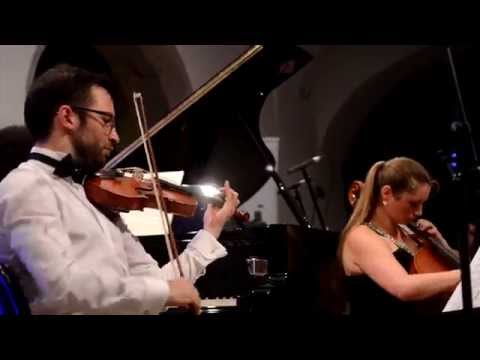International Music Festival Imago Slovenia
- European Musical Summer 2009 – Cultural Networking of Historic Sites, 2008
Project summary Show more
These activities were later been subsumed into the wider framework of the International Music Festival Imago Slovenia, which has significantly broadened the scope of the idea. It now sets its programme on heritage sites all around Slovenia and each year between June and September, about 30 to 50 events take place.
Classical and early music, which used to be the focus of the original festival, has been gradually joined by jazz and world music concerts, and occasionally even some rock acts. In producing fresh musical projects, the festival regularly cooperates with different institutions like the Slovene National Theatre Opera and Ballet Ljubljana, the Slovene Philharmonic Orchestra, and the RTV Slovenia Big Band.
The festival concept
The most important aims of the whole project revolve around the ideas of introducing live and contemporary artistic expressions to the already culturally rich, but often neglected heritage settings; the expansion of diverse artistic forms into smaller towns; the promotion of classical music, artists, and performers; and accessibility to cultural products, which is also why the concerts have free admission.
Venues
The programme takes place at different places and has up until now featured about 2 dozen cities and towns around Slovenia (Bled, Dobrna, Kranjska gora, Maribor, Metlika, Nova Gorica, Piran, Ribnica, Škofja Loka, Velenje, Vipava, etc) and even places in some neighbouring countries (Gorizia and Trieste in Italy, Bleiberg in Austria, Szentgotthárd in Hungary; all places with a Slovene minority population). The events are organised in various co-productions with the local producers.
The list of venues includes some of Slovenia's favourite castles and other prominent locations, such as Ribnica Castle, the Bela krajina Museum, the City Museum of Ljubljana, the Velenje Castle, the Ormož Castle, the Loka Castle, the Kromberk Castle, the main square in Kranjska gora, St Jacob's Church in Ljubljana and a number of other churches, mansions and public squares.
Programme
The main bulk of the programme of the festival consists of classical music from different periods and written for various chamber groups, choirs, or symphony orchestras. The festival has cooperated with literally thousands of artists both from Slovenia and abroad, so the Prokofiev Guitar Duo, Ljubljana Vocal Academy, Slovene Philharmonic Orchestra, the Accord Quartet (HU), the Harvard Din & Tonics (US), the Egyptian Philharmonic Chamber Orchestra (EG), the Wolverhampton Youth Orchestra and the Wolverhampton Youth Wind Orchestra (UK), Coro Filarmonico Trentino (IT), the CREA Symphony Orchestra (DK), the City of Belfast Youth Orchestra (UK) and Trio Smetana (CZ) are just a few of the notable recent guests.
Jazz and ethno also play an important feature in the programme, which has hosted a very diverse set of artists. A few of them are Katalena, Jean Toussaint Four (US) and Yasuto Ohara Super Jazz Trio (JP). Since 2009, the jazz programme is run as a special category of the festival, called the Jazz Stage.
Four concerts from each season are recorded by Radio-Television Slovenia (RTV Slovenia) and five by Radio Slovenia.


